Abstract
The ventilatory response to electrically induced exercise (EEL) was studied in eighteen normal subjects and compared with the response to performing the same exercise voluntarily (EV). EEL was produced by surface electrode stimulation of the quadriceps and hamstring muscles so as to cause a pushing movement at 1 HZ against a spring load; this produced no pain or discomfort. Matching of EV to EEL was achieved by subjects copying a tension signal recorded during EEL and displayed on a storage oscilloscope. There were no differences between the resting states measured before either form of exercise. The ventilatory response (change in ventilation as a ratio of the change in CO2 elimination) was similar in the two types of exercise. The increases in ventilation and CO2 elimination were greater with EEL. Small but significant increases in the gas exchange ratio and serum lactate were found for EEL but not for EV, suggesting an increase in anaerobic metabolism in EEL. End-tidal PCO2 showed little change in either form of exercise. In some runs end-tidal PCO2 rose, but insufficiently to account for the ventilatory response as judged by the response to inhaled CO2. In two subjects arterial blood samples showed small and inconsistent changes in both Pa,CO2 and PaO2 for EV and EEL. pH and base excess changes also were consistent with more anaerobiosis with EEL compared to EV. The first ten breaths of exercise were used to study the on transient. In EV, expiratory duration shortened and ventilation increased significantly on the first breath but CO2 elimination did not increase until the second breath; in EEL, these variables did not change significantly until the second breath. For the remainder of the on transient the pattern of the ventilatory response was similar for EV and EEL. By the end of the on transient both EV and EEL had reached approximately 80% of their final steady-state values. These results suggest that a normal ventilatory response can occur in the absence of a drive to exercise from the cortex.
Full text
PDF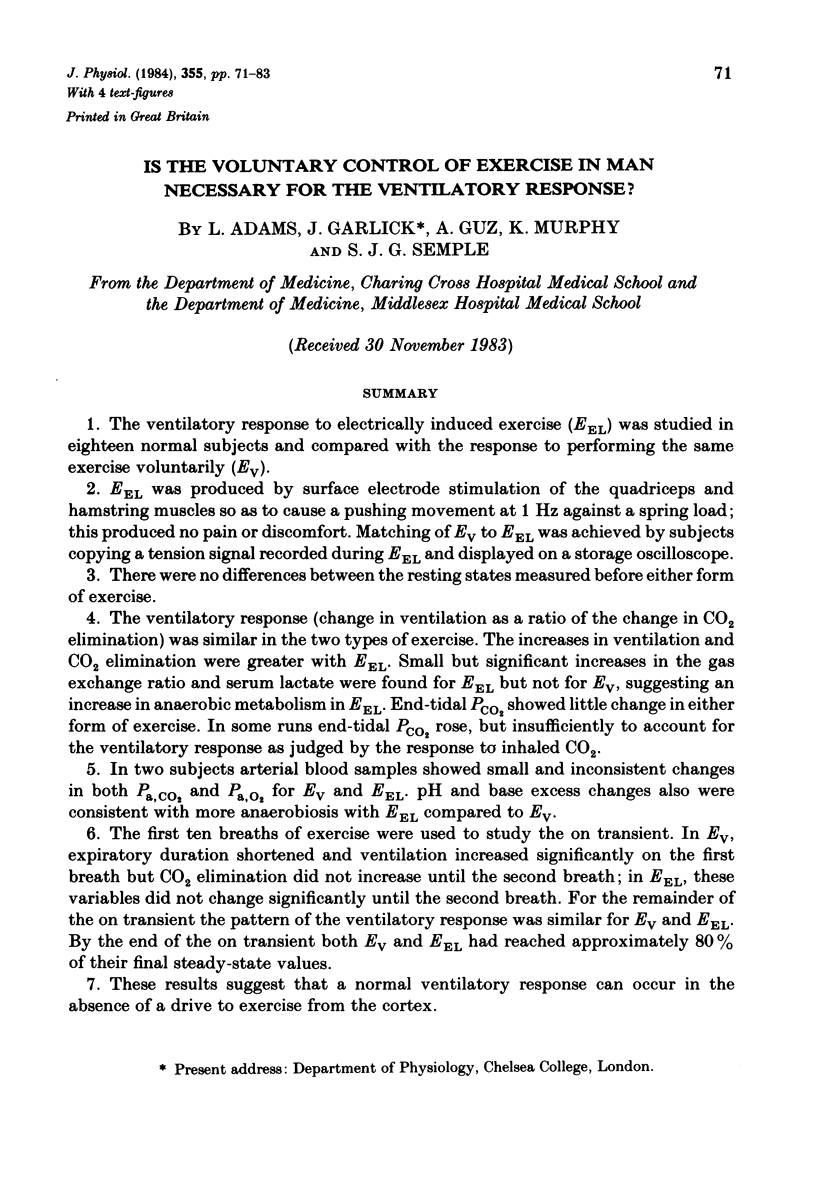
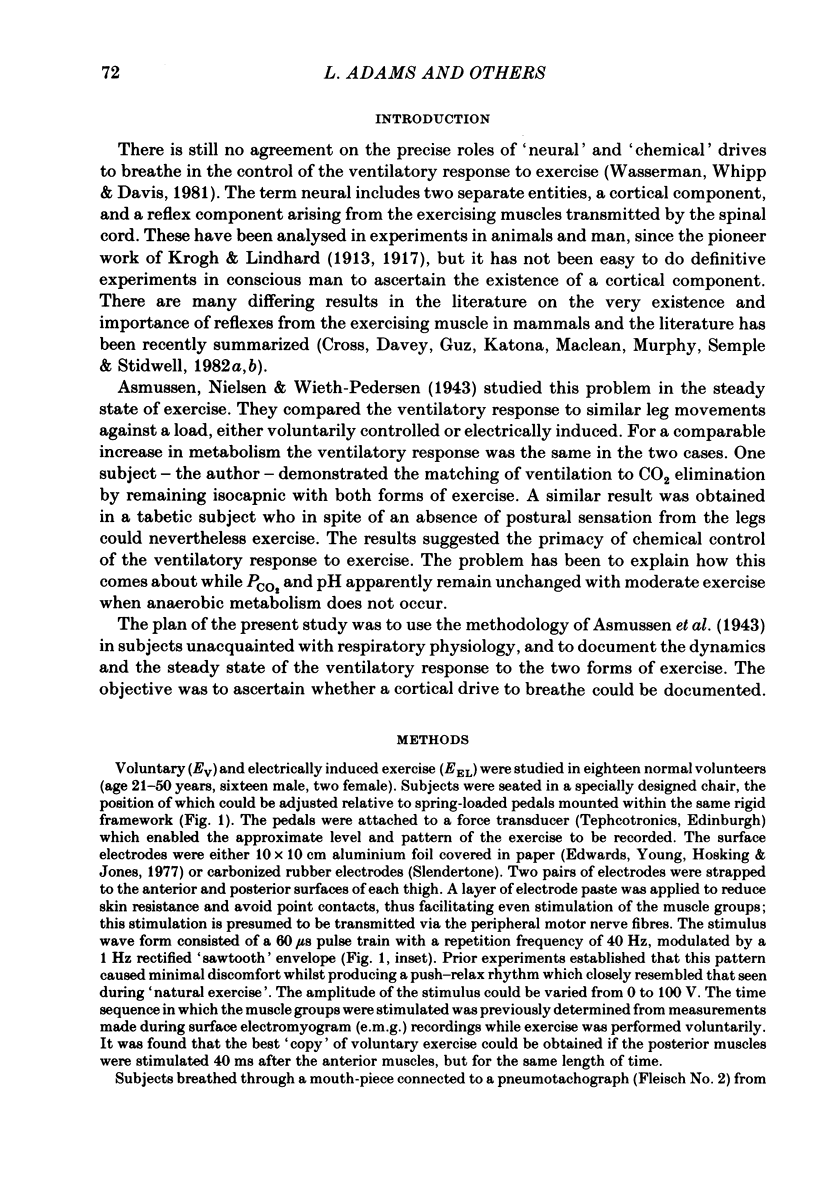
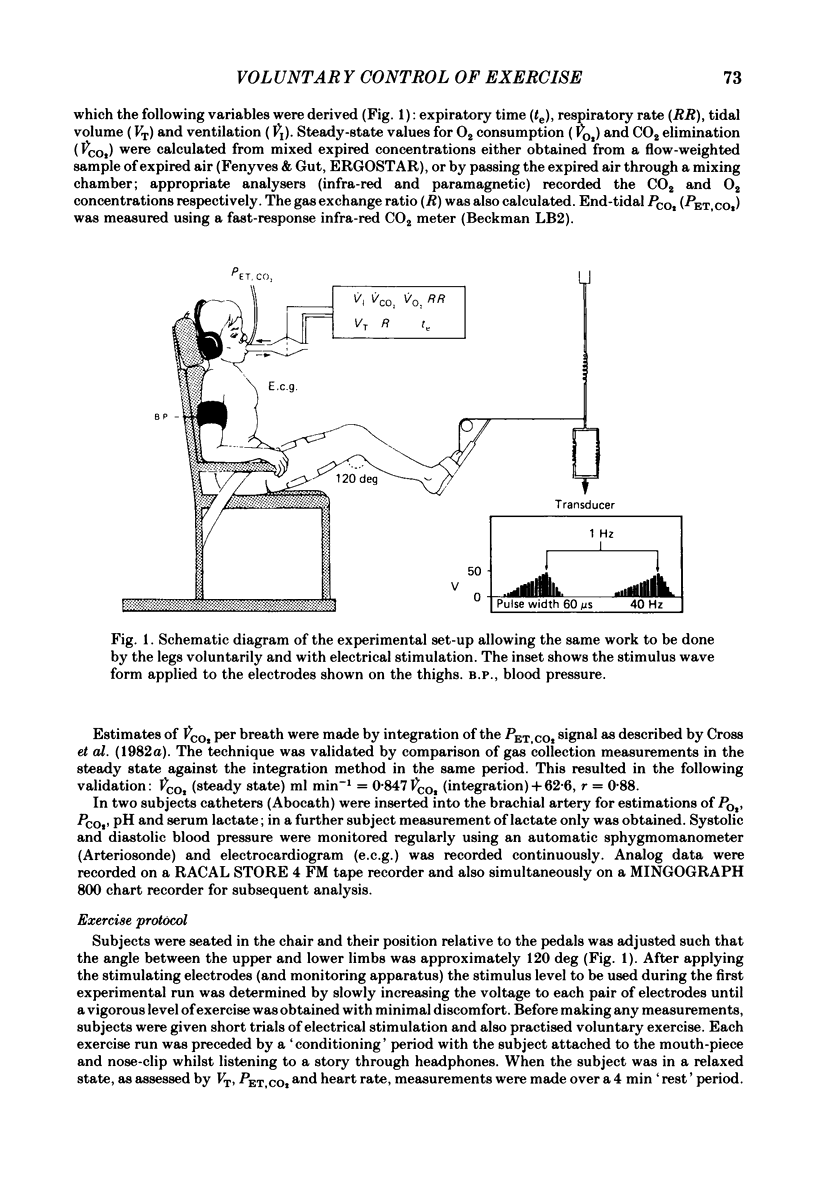
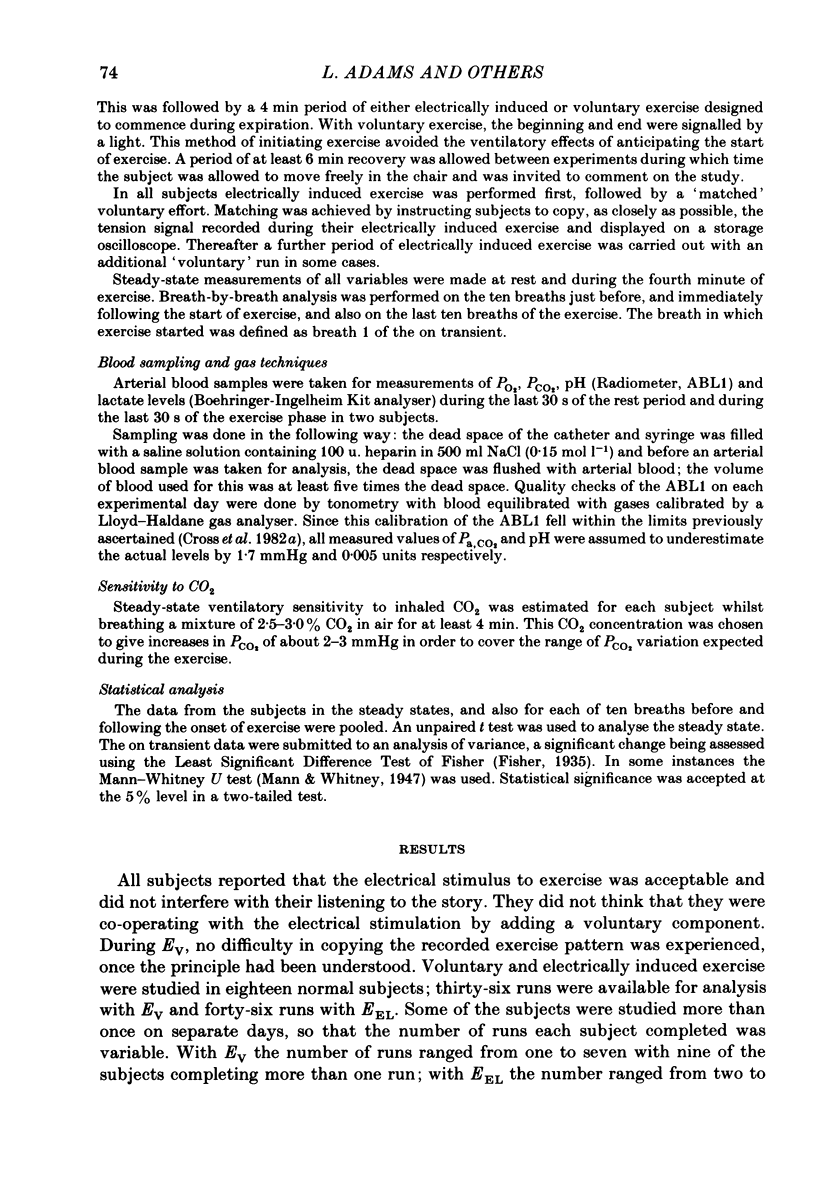
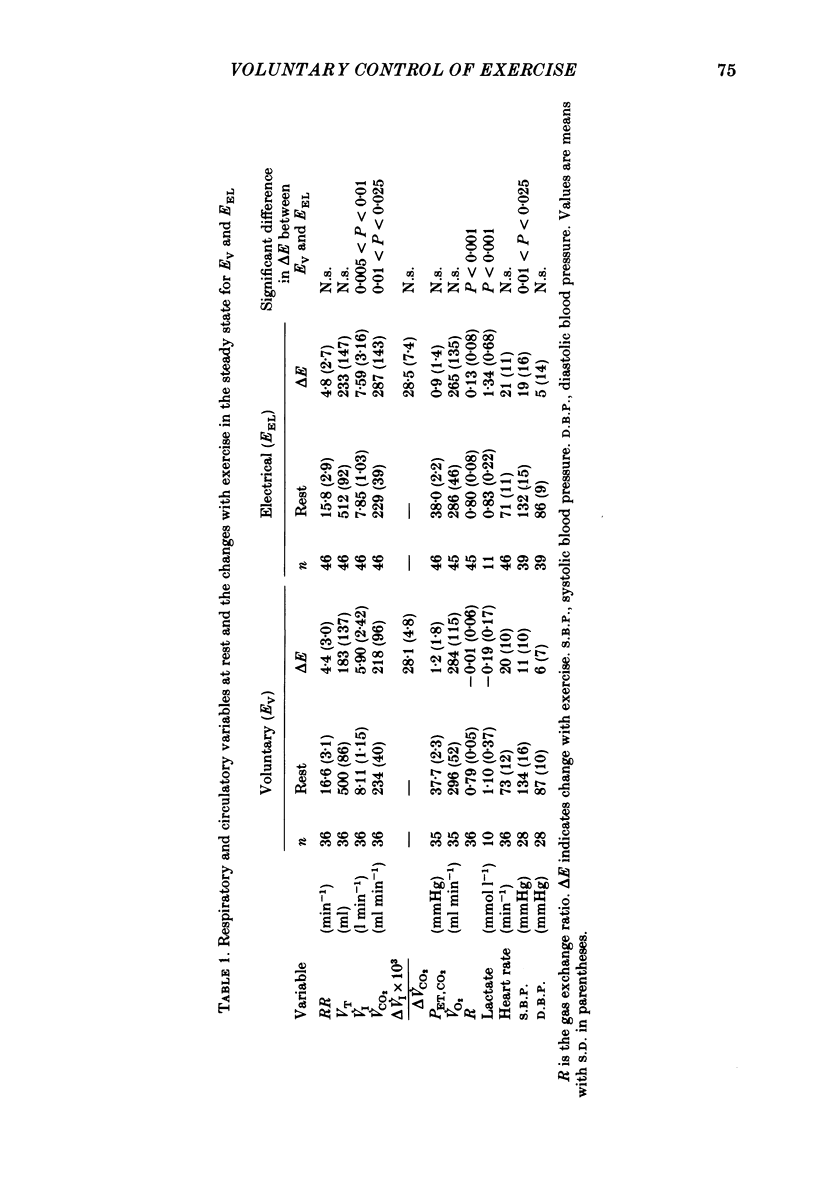
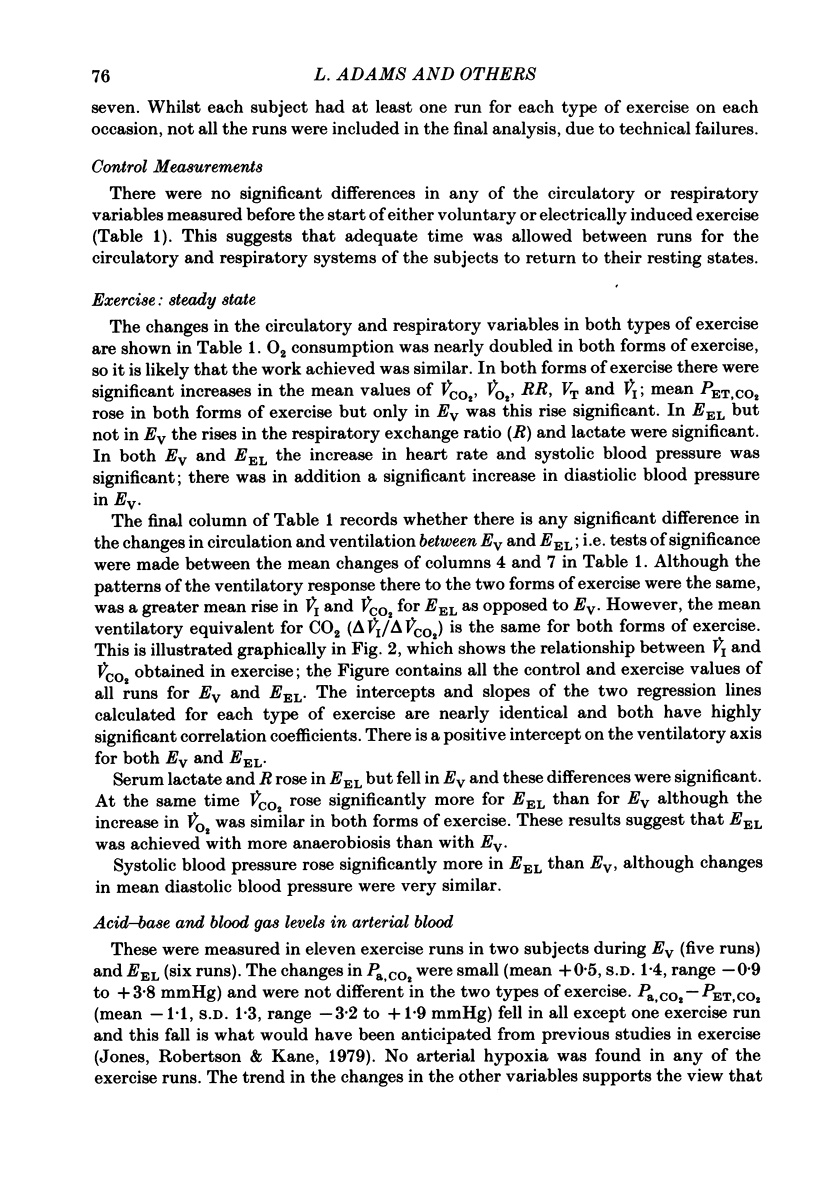
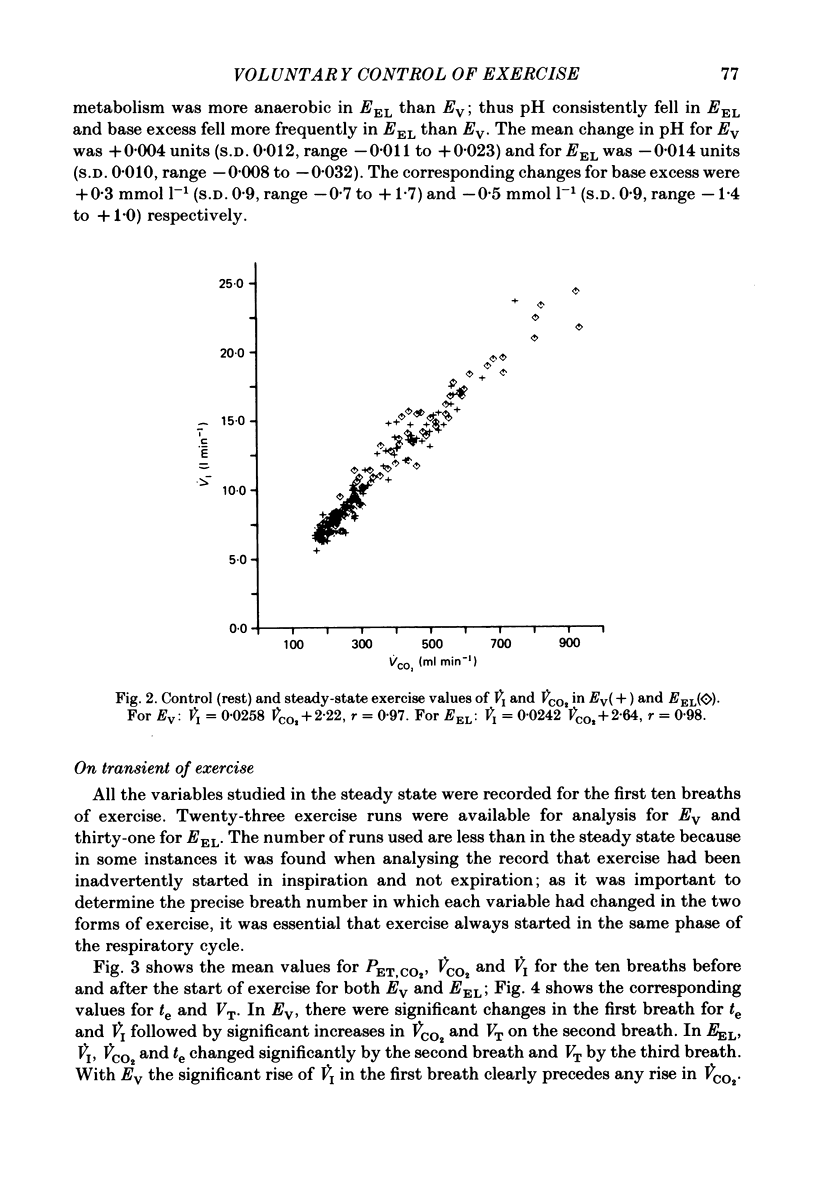
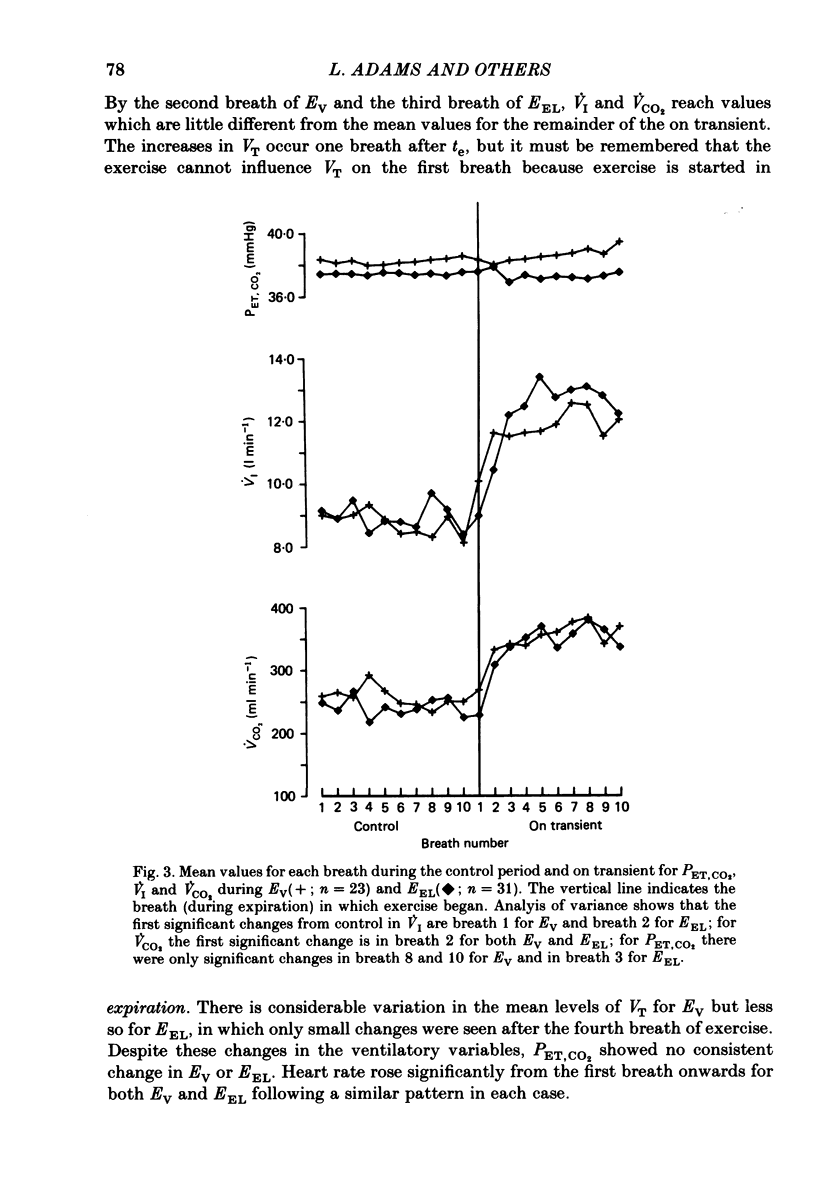
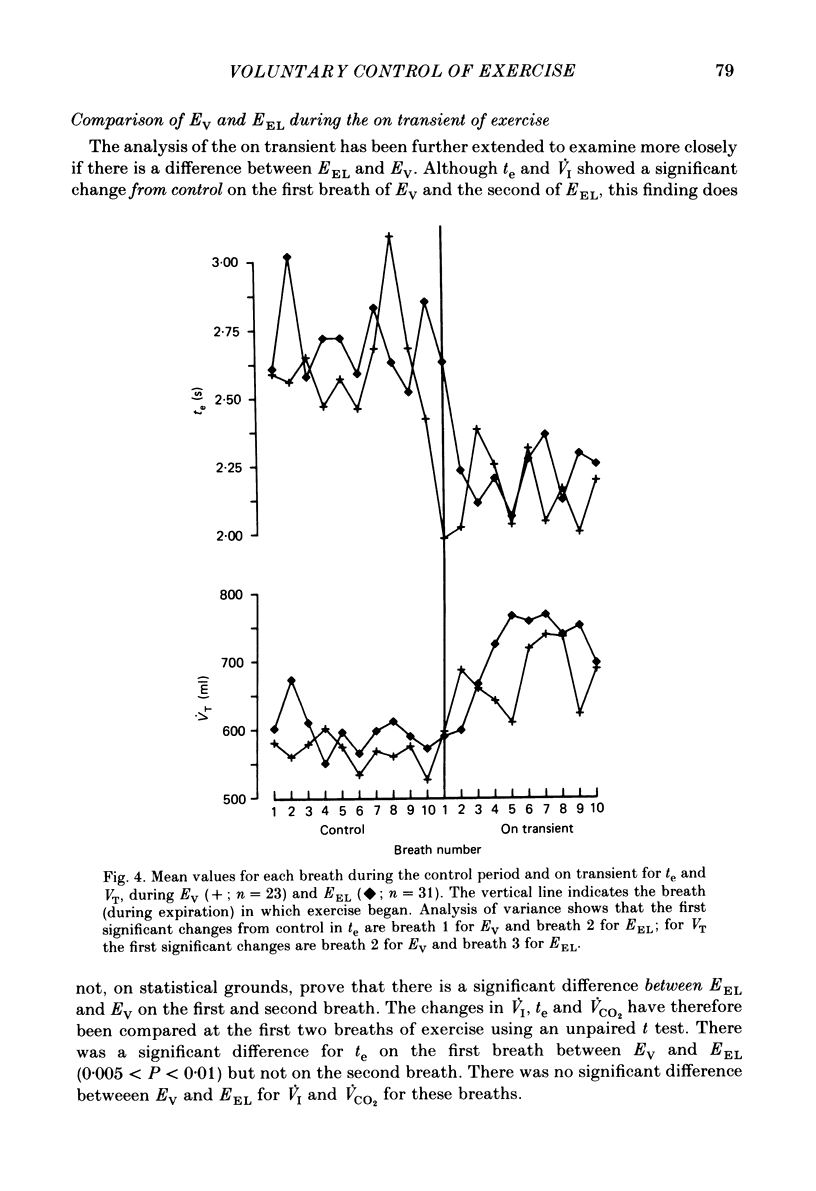

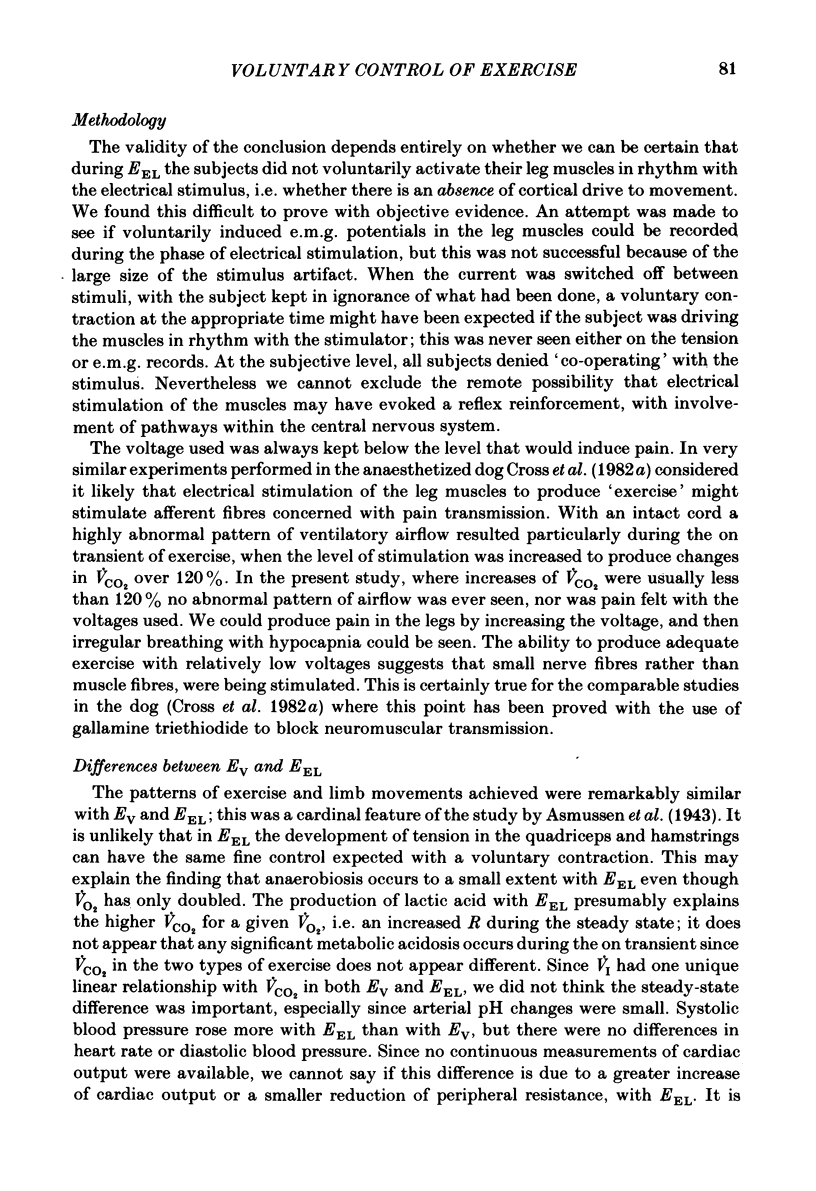
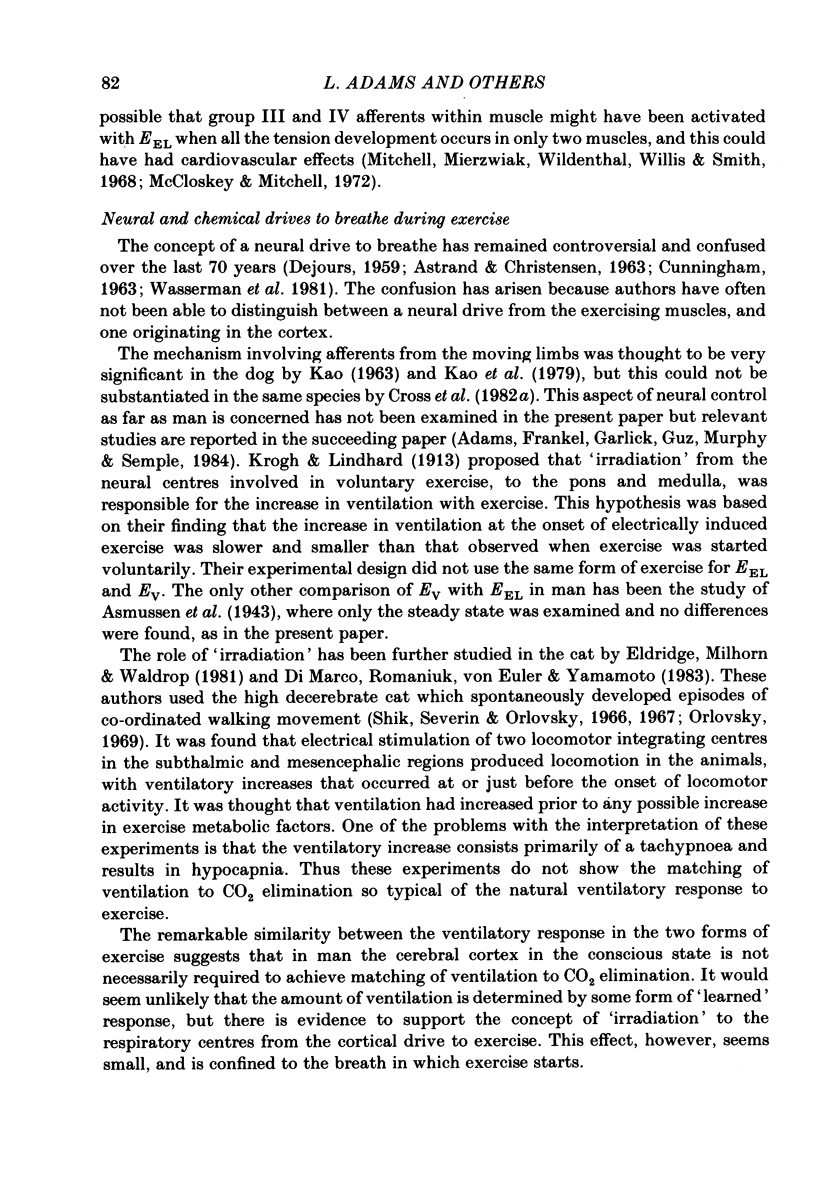
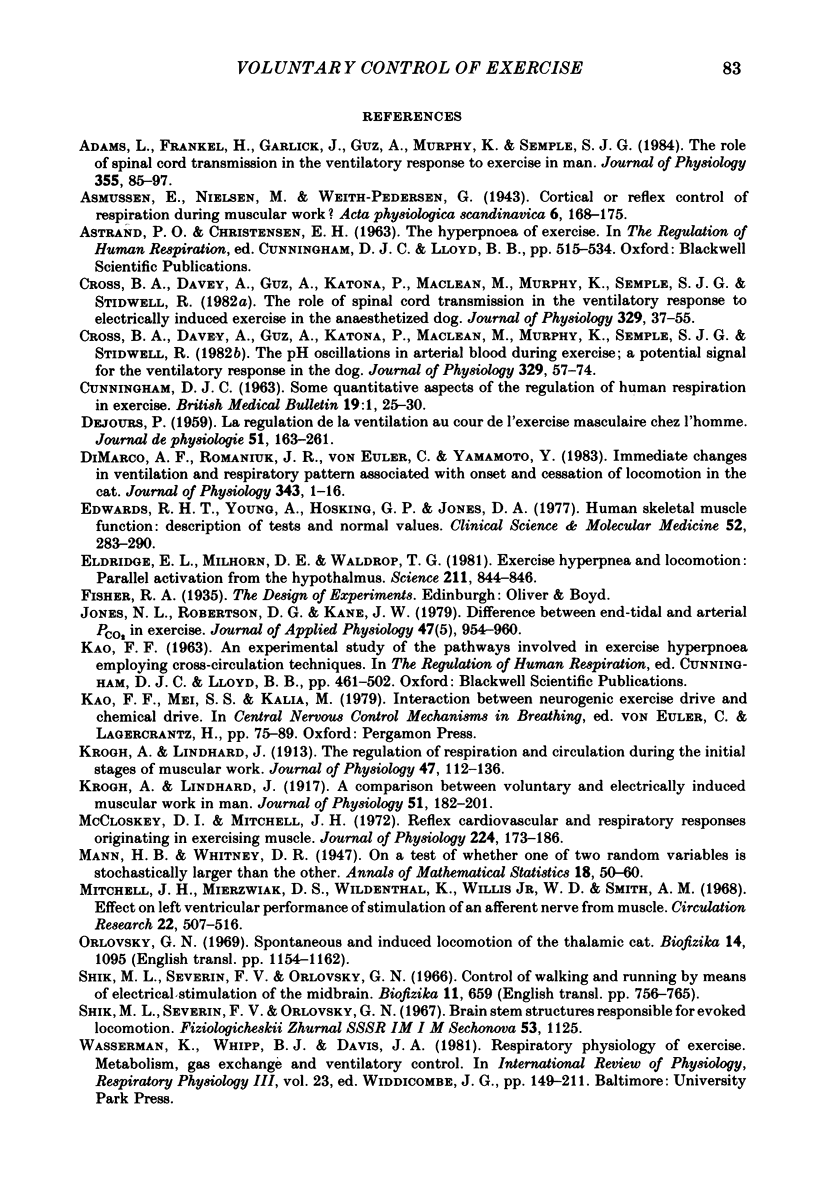
Selected References
These references are in PubMed. This may not be the complete list of references from this article.
- Adams L., Frankel H., Garlick J., Guz A., Murphy K., Semple S. J. The role of spinal cord transmission in the ventilatory response to exercise in man. J Physiol. 1984 Oct;355:85–97. doi: 10.1113/jphysiol.1984.sp015408. [DOI] [PMC free article] [PubMed] [Google Scholar]
- CUNNINGHAM D. J. Some quantitative aspects of the regulation of human respiration in exercise. Br Med Bull. 1963 Jan;19:25–30. doi: 10.1093/oxfordjournals.bmb.a070000. [DOI] [PubMed] [Google Scholar]
- Cross B. A., Davey A., Guz A., Katona P. G., MacLean M., Murphy K., Semple S. J., Stidwill R. The ph oscillations in arterial blood during exercise; a potential signal for the ventilatory response in the dog. J Physiol. 1982 Aug;329:57–73. doi: 10.1113/jphysiol.1982.sp014290. [DOI] [PMC free article] [PubMed] [Google Scholar]
- Cross B. A., Davey A., Guz A., Katona P. G., MacLean M., Murphy K., Semple S. J., Stidwill R. The role of spinal cord transmission in the ventilatory response to electrically induced exercise in the anaesthetized dog. J Physiol. 1982 Aug;329:37–55. doi: 10.1113/jphysiol.1982.sp014289. [DOI] [PMC free article] [PubMed] [Google Scholar]
- DiMarco A. F., Romaniuk J. R., Von Euler C., Yamamoto Y. Immediate changes in ventilation and respiratory pattern associated with onset and cessation of locomotion in the cat. J Physiol. 1983 Oct;343:1–16. doi: 10.1113/jphysiol.1983.sp014878. [DOI] [PMC free article] [PubMed] [Google Scholar]
- Edwards R. H., Young A., Hosking G. P., Jones D. A. Human skeletal muscle function: description of tests and normal values. Clin Sci Mol Med. 1977 Mar;52(3):283–290. doi: 10.1042/cs0520283. [DOI] [PubMed] [Google Scholar]
- Eldridge F. L., Millhorn D. E., Waldrop T. G. Exercise hyperpnea and locomotion: parallel activation from the hypothalamus. Science. 1981 Feb 20;211(4484):844–846. doi: 10.1126/science.7466362. [DOI] [PubMed] [Google Scholar]
- Jones N. L., Robertson D. G., Kane J. W. Difference between end-tidal and arterial PCO2 in exercise. J Appl Physiol Respir Environ Exerc Physiol. 1979 Nov;47(5):954–960. doi: 10.1152/jappl.1979.47.5.954. [DOI] [PubMed] [Google Scholar]
- Krogh A., Lindhard J. A comparison between voluntary and electrically induced muscular work in man. J Physiol. 1917 Jul 3;51(3):182–201. doi: 10.1113/jphysiol.1917.sp001795. [DOI] [PMC free article] [PubMed] [Google Scholar]
- Krogh A., Lindhard J. The regulation of respiration and circulation during the initial stages of muscular work. J Physiol. 1913 Oct 17;47(1-2):112–136. doi: 10.1113/jphysiol.1913.sp001616. [DOI] [PMC free article] [PubMed] [Google Scholar]
- McCloskey D. I., Mitchell J. H. Reflex cardiovascular and respiratory responses originating in exercising muscle. J Physiol. 1972 Jul;224(1):173–186. doi: 10.1113/jphysiol.1972.sp009887. [DOI] [PMC free article] [PubMed] [Google Scholar]
- Mitchell J. H., Mierzwiak D. S., Wildenthal K., Willis W. D., Jr, Smith A. M. Effect on left ventricular performance of stimulation of an afferent nerve from muscle. Circ Res. 1968 Apr;22(4):507–516. doi: 10.1161/01.res.22.4.507. [DOI] [PubMed] [Google Scholar]
- Shik M. L., Severin F. V., Orlovskii G. N. Struktury mozgovogo stvola, otvetstvennye za vyzvannuiu lokomotsiiu. Fiziol Zh SSSR Im I M Sechenova. 1967 Sep;53(9):1125–1132. [PubMed] [Google Scholar]
- Shik M. L., Severin F. V., Orlovskii G. N. Upravlenie khod'boi i begom posredstvom elektricheskoi stimulatsii srednego mozga. Biofizika. 1966;11(4):659–666. [PubMed] [Google Scholar]
- Wasserman K., Whipp B. J., Davis J. A. Respiratory physiology of exercise: metabolism, gas exchange, and ventilatory control. Int Rev Physiol. 1981;23:149–211. [PubMed] [Google Scholar]


